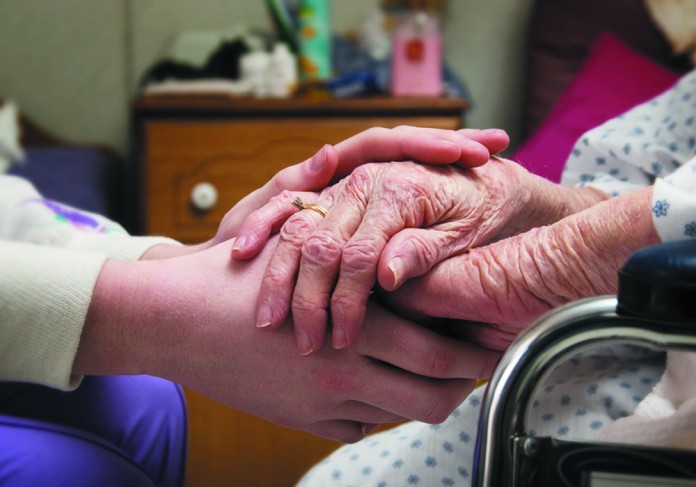UNIVERSITY PARK, Pa. – In life, we are told, you get what you pay for. In death, however, the same is not always true.
“As a nation, we spend a disproportionate amount of health care money in the years preceding death,” said Franklin Berkey, family medicine physician with Penn State Hershey Medical Group in State College who is board certified in hospice and palliative care medicine.
“In fact, one out every four Medicare dollars is spent for the 5 percent of beneficiaries in their last five years of life.”
Expense
Considered individually, the numbers take on a greater understanding. A recent study conducted by the Mount Sinai School of Medicine estimated an individual will spend an average of $39,000 in out-of-pocket medical expenses in their last five years of life.
An individual with a long-term illness such as Alzheimer’s dementia will spend an average of $66,000 in the same period.
“Here’s the catch — these greater expenditures do not necessarily equal greater care or a longer life,” said Berkey.
“In a terminal illness, the self-perpetuating pattern of tests and treatments often leads to side effects and extended hospital stays rather than to improved health or a longer life. Quite simply, sometimes disease treatment does not mean better care.”
What is it?
Palliative medicine is the medical specialty which focuses on symptom control rather than disease treatment. Hospice is a Medicare benefit in which a patient receives palliative care in their home through a coordinated team of health professionals.
In the early stages of a significant disease, hospice appropriately takes a back seat to curative medicine. However, when appropriate, the recognition of palliative medicine and hospice is not an admission of defeat, but rather of acceptance.
Hospice is appropriate when a patient’s prognosis is estimated to be six months or less. Some patients enrolled in hospice die before this time, while other patients survive more than a year while receiving hospice care.
In fact, hospice patients often live longer than similar patients not enrolled in hospice.
Study
In one study, congestive heart failure patients enrolled in a hospice program lived three months longer than similar patients not enrolled in hospice.
More importantly, hospice patients report fewer distressing symptoms, avoid unnecessary trips to the emergency department, and report higher quality of life scores.
Six months after the death of a hospice patient, the families of the deceased report less depression and usually have a better overall view of their loved one’s death.
Care
The hospice team — a hospice physician, registered nurse, physical and occupational therapist, social worker, clergymen, bereavement coordinator, and volunteers — work in conjunction with the patient’s primary physician to deliver compassionate care with the goals of improving quality of life and maximizing comfort.
Care is provided wherever the patient calls home — their house, an assisted care facility or a nursing home.
Hospice is not only for cancer patients. In fact, about 50 percent of hospice patients have a diagnosis other than cancer, including congestive heart failure, dementia, generalized debility, and chronic obstructive pulmonary disease.
“Selecting hospice is about choices,” said Berkey. “Hospice enables the dying patient to choose where they live, how they live, and where they die.”










